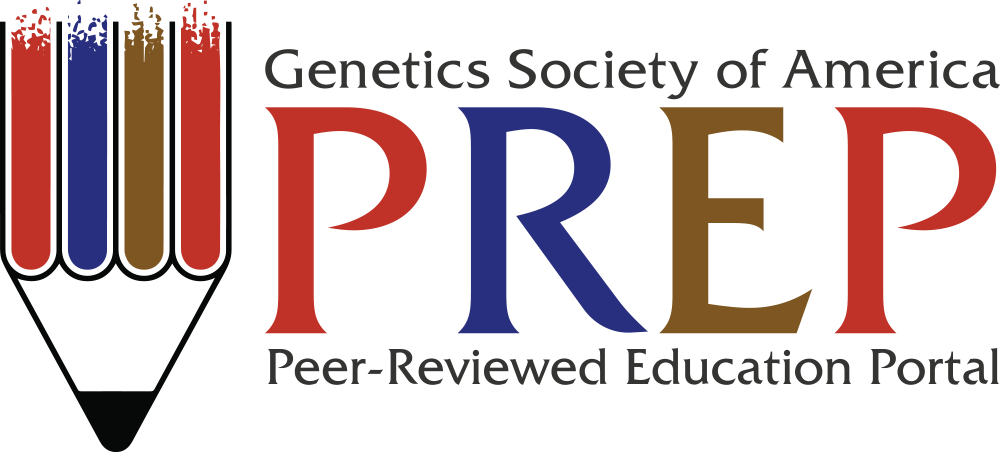|

Original
Resources
Genetics Research Project Laboratory: A Discovery-Based Undergraduate Research Course
Author(s):
Eugenia Villa-Cuesta and Lawrence Hobbie
Overview:
This resource is an example of a discovery-based undergraduate research course in genetics, using the course-based undergraduate research experience (CURE) model. During the first part of the course students perform designed experiments with the goal of learning laboratory techniques, experimental design, and key features of the model system. During the second part of the course, students perform original research. Two example lab manuals from different offerings of the course are given, one using Drosophila mutants in mitochondrial function and one using Arabidopsis hormone mutants. Representative results of the experiments and students’ perceptions of learning are also included.
Genetics Concept(s) Addressed:
Transmission/Patterns of Inheritance: How can one deduce information about genes, alleles, and gene functions from analysis of genetic crosses and patterns of inheritance?
Molecular Biology of Gene Function: How is genetic information expressed so it affects an organism’s structure and function?
Gene Expression and Regulation: How do genes and genomes control changes in an organism's structure and function throughout its life cycle?
Genetics of Model Organisms: How do the results of molecular genetic studies in model organisms help us understand aspects of human genetics and genetic diseases?
Core Competencies Addressed:
Students should be able to locate, read, and comprehend primary literature research papers on genetics topics.
Students should be able to implement observational strategies to formulate a question.
Students should be able to generate testable hypotheses.
Students should be able to design an experiment using appropriate controls and appropriate sample sizes.
Students should be able to gather and evaluate experimental evidence, including qualitative and quantitative data.
Students should be able to apply statistical methods when analyzing their data, and use patterns to construct a model.
Students should be able to generate and interpret graphs displaying experimental results.
Students should be able to communicate experimental results effectively, including writing research papers and giving presentations.
Students should be able to effectively explain genetics concepts to different audiences.
Audience:
Intermediate undergraduate; biology/genetics majors
Activity Type:
Discovery-based Laboratory Course
Activity Length:
Full semester
Keywords:
Drosophila, Arabidopsis, discovery-based learning, Course-based undergraduate research experiece (CURE)
Citation:
Villa-Cuesta, E. and Hobbie, L. (2016) Genetics Research Project Laboratory: A Discovery-Based Undergraduate Research Course. Genetics Society of America Peer-Reviewed Education Portal (GSA PREP): 2016.003; doi: 10.1534/gsaprep.2016.003
Resource Justification and
Instructor Guide
Drosophila Laboratory
Drosophila Lab Manual
Drosophila Lab Instructor Guidelines
Arabidopsis Laboratory
Arabidopsis Lab Manual
Arabidopsis Lab Instructor Guidelines
|